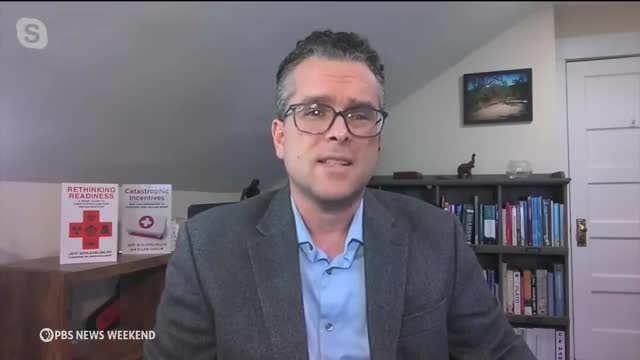Insurance industry faces crisis amid climate change disasters
This article was created by AI summarizing key points discussed. AI makes mistakes, so for full details and context, please refer to the video of the full meeting. Please report any errors so we can fix them. Report an error »

In a recent government meeting, experts discussed the pressing challenges posed by climate change on flood risk management and insurance. The conversation highlighted the inadequacies of current flood maps, which fail to account for evolving risks, particularly in smaller riverine basins prevalent in mountainous regions like Western North Carolina. As severe storms become more frequent, homeowners in areas previously deemed low-risk may now face significant flood threats, prompting calls for broader awareness and consideration of flood insurance, even for those outside designated flood plains.
The National Flood Insurance Program (NFIP) was a focal point of the discussion, with experts noting that while most flood insurance policies are issued through private companies, they are ultimately backed by the federal government. This system is under increasing strain as insurers withdraw from high-risk areas, particularly in states like Florida and California, where natural disasters have led to record payouts. The rising costs and limited availability of insurance threaten to leave many homeowners vulnerable, especially as the need for coverage grows.
Concerns were raised about the moral hazard created by subsidized insurance rates, which may inadvertently encourage development in hazardous areas. However, experts emphasized that many individuals already reside in these locations, making it crucial to find a balance between risk management and economic viability. The discussion underscored the need for a long-term strategy to reform the NFIP and enhance disaster preparedness through improved building codes and climate mitigation efforts.
Ultimately, the meeting called for a shift in focus from merely expanding the insurance market to investing in preventative measures that could reduce the physical risks associated with flooding and other climate-related disasters. This approach aims to alleviate the financial burdens on the insurance system while safeguarding communities against future threats.
The National Flood Insurance Program (NFIP) was a focal point of the discussion, with experts noting that while most flood insurance policies are issued through private companies, they are ultimately backed by the federal government. This system is under increasing strain as insurers withdraw from high-risk areas, particularly in states like Florida and California, where natural disasters have led to record payouts. The rising costs and limited availability of insurance threaten to leave many homeowners vulnerable, especially as the need for coverage grows.
Concerns were raised about the moral hazard created by subsidized insurance rates, which may inadvertently encourage development in hazardous areas. However, experts emphasized that many individuals already reside in these locations, making it crucial to find a balance between risk management and economic viability. The discussion underscored the need for a long-term strategy to reform the NFIP and enhance disaster preparedness through improved building codes and climate mitigation efforts.
Ultimately, the meeting called for a shift in focus from merely expanding the insurance market to investing in preventative measures that could reduce the physical risks associated with flooding and other climate-related disasters. This approach aims to alleviate the financial burdens on the insurance system while safeguarding communities against future threats.
View full meeting
This article is based on a recent meeting—watch the full video and explore the complete transcript for deeper insights into the discussion.
View full meeting